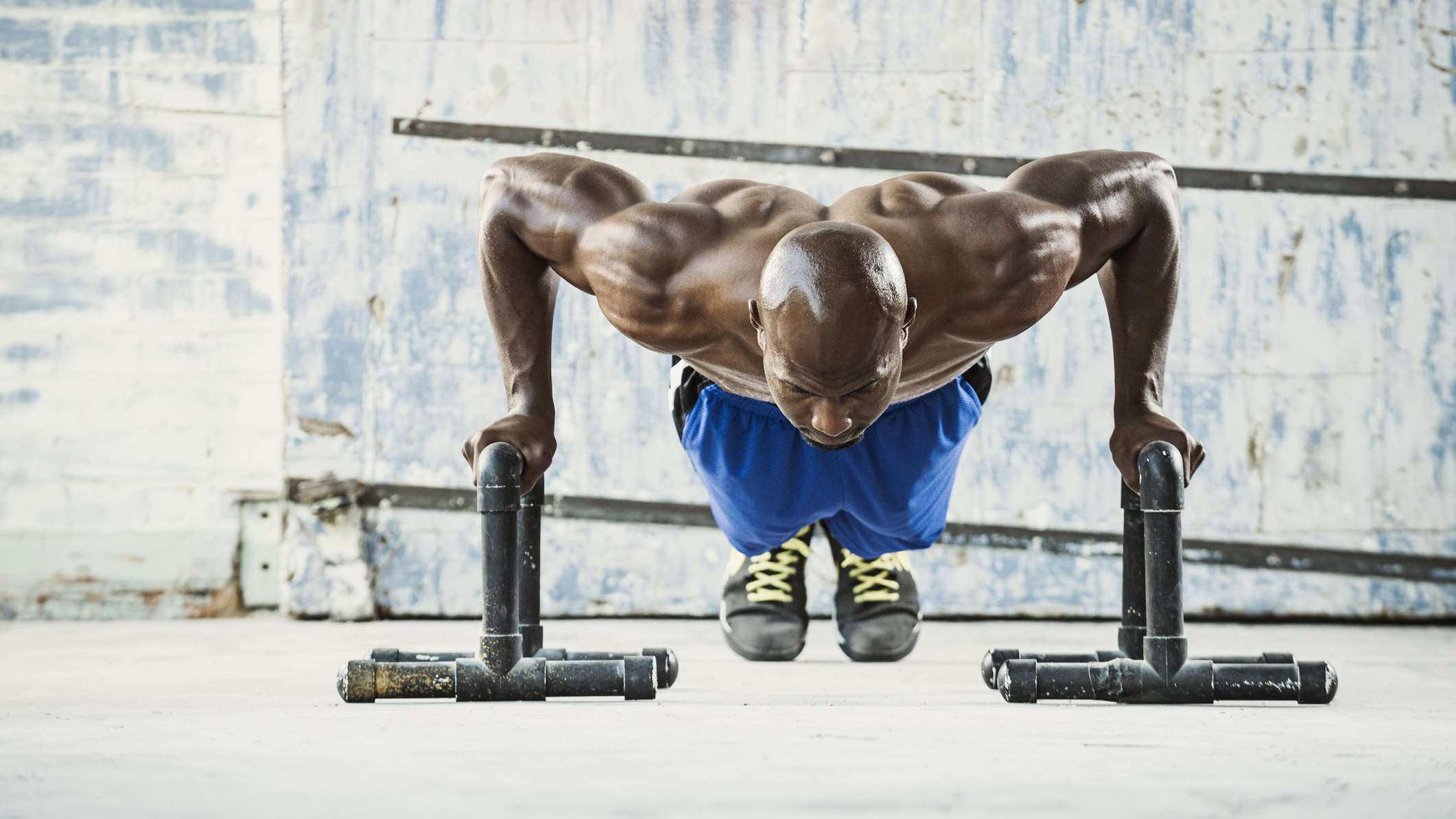Wrist pain during push ups? Here is an easy fix to elevate your press up game at home
Get big arms and big pecs doing push ups – minus the wrist pain


Don't let wrist pain slow down your gains: you can get big arms and big pecs using a simple home gym equipment or even just home weights you might already have at your disposal. Wrist pain is a common occurrence when doing push ups, which is a shame as push ups are just as good as a bench press in building big guns and a broad chest. You can combat wrist pain during push ups with parallettes.
What are parallettes? Parallettes, or parallette bars, were originally used for gymnastics training but they are getting more and more mainstream, especially now that everyone is doing home workouts. The bars themselves are pretty simple: imagine two, u-shaped bars you can place down on the floor and grab as handles. Usually, the handles aren't connected so you can adjust the distance between them to your unique physiology (a.k.a. the distance between your shoulders).
- This 10-minute medicine ball full body workout lets you burn fat fast in a small space
How do parallettes alleviate wrist pain during push ups?
How do parallettes work and, most importantly, why do they work? When doing push ups without any equipment, your wrist is an unnatural position and even worse, it bears a lot of load too. Try reaching forward with your arms, palms open, fingers pointing up: you will feel a strain starting from just under the wrist shooting all the way up towards the elbows. Now imagine adding weight to this and that's exactly what push ups do to your wrist.
Even for younger people, but especially for anyone working out over 30, when recovery can take longer, this might just be too much to handle for the body.
Using parallettes puts the wrist in a more neutral position. Your palms are closed and the wrist itself is more aligned with the forearm too. It's important to keep the wrist in the correct position and don't let it slide down to the side of the bars: that might end up putting the same amount of pressure on the wrist as not using the parallettes. For the best (a.k.a. least painful) results, keep the forearm muscle engaged and place the weight of the body on the base of your palm.

Parallettes alternatives
Parallettes are dirt cheap: the simple wooden variety can be bought for less than a cinema ticket. For push ups, you want to get the 'mini' version that sits very close to the ground, as opposed to the mid-sized ones that are great for dips but not quite as good for push ups.
You don't necessarily have to buy new equipment either. If you have a pair of dumbbells or kettlebells at home, they can be used for push ups too. Just grab the handle of these weights the same way you'd do if you used parallettes and fire away. As much as we like adjustable dumbbells and kettlebells, such as the Bowflex SelectTech 1090 Dumbbell and the Bowflex SelectTech 840 Kettlebell, we recommend using hex dumbbells and cast iron kettlebells for push ups as they provide a more stable platform than adjustable weights.
Get all the latest news, reviews, deals and buying guides on gorgeous tech, home and active products from the T3 experts
Fancy getting a new Bowflex, regardless? We have the best Bowflex deals listed right here. If you are planning on building a decent home gym, we have all the info you might need to make an educated decision on our best barbell, best weight bench, best suspension trainer guides.

Matt Kollat is a journalist and content creator who works for T3.com and its magazine counterpart as an Active Editor. His areas of expertise include wearables, drones, fitness equipment, nutrition and outdoor gear. He joined T3 in 2019. His byline appears in several publications, including Techradar and Fit&Well, and more. Matt also collaborated with other content creators (e.g. Garage Gym Reviews) and judged many awards, such as the European Specialist Sports Nutrition Alliance's ESSNawards. When he isn't working out, running or cycling, you'll find him roaming the countryside and trying out new podcasting and content creation equipment.